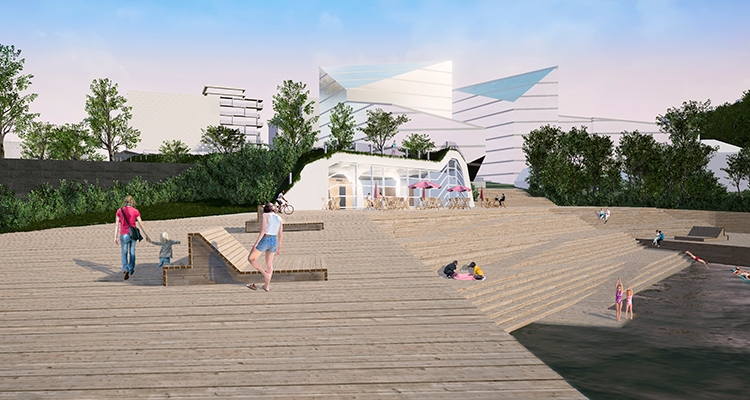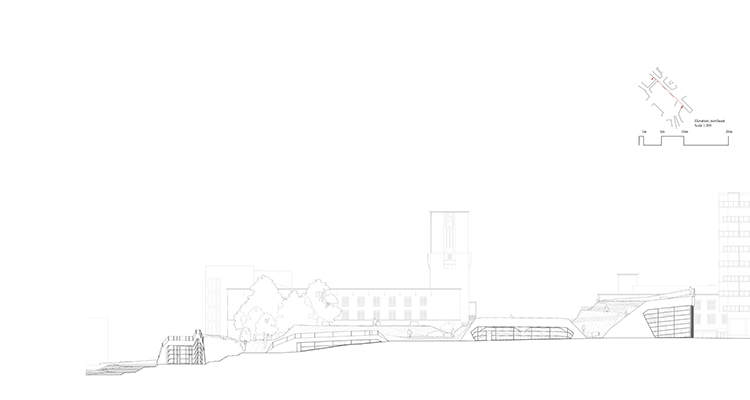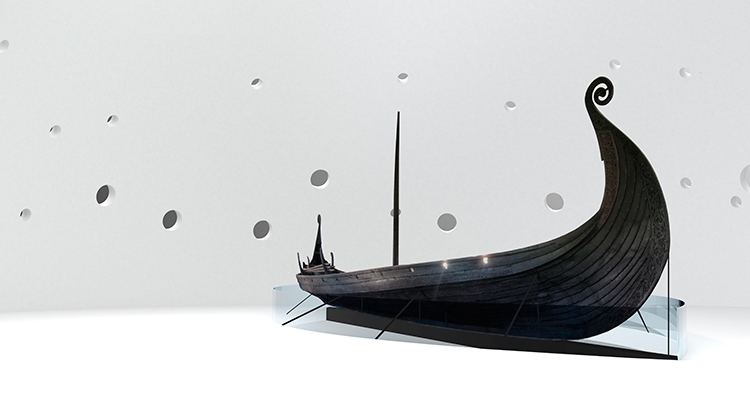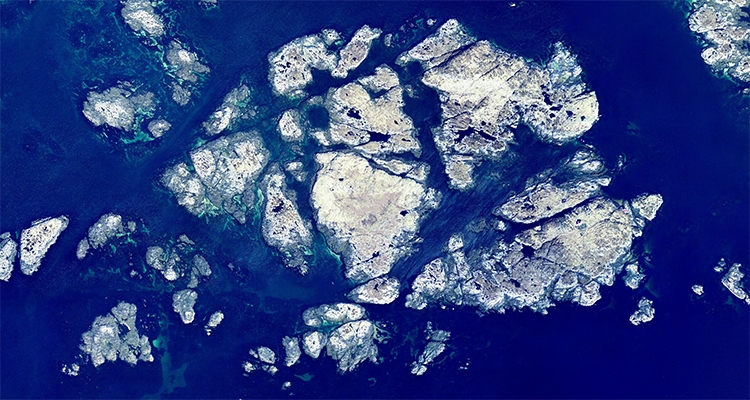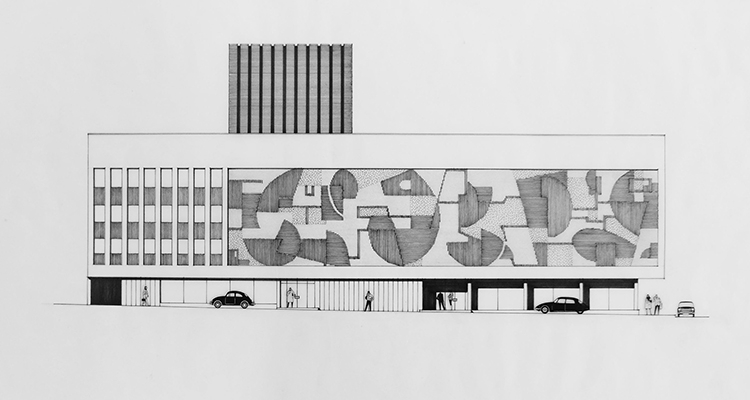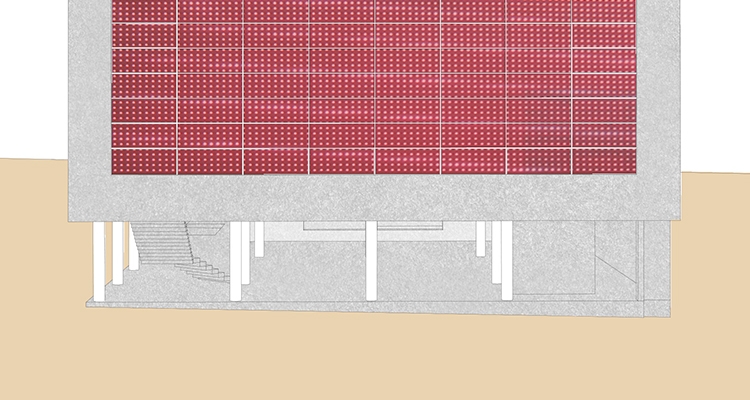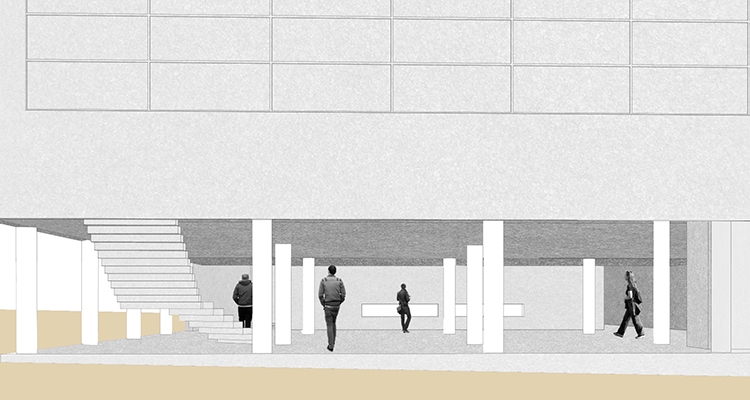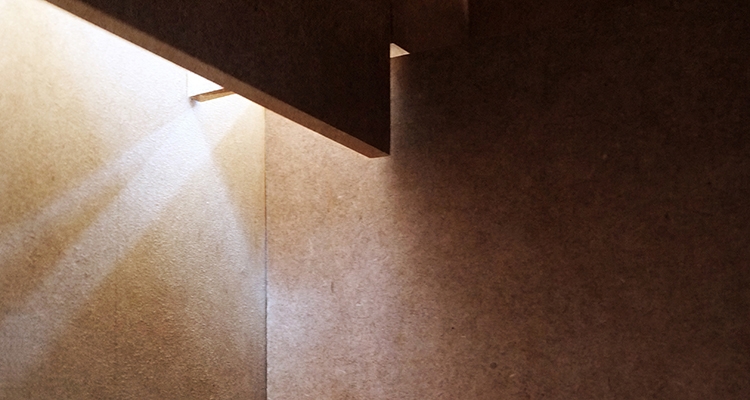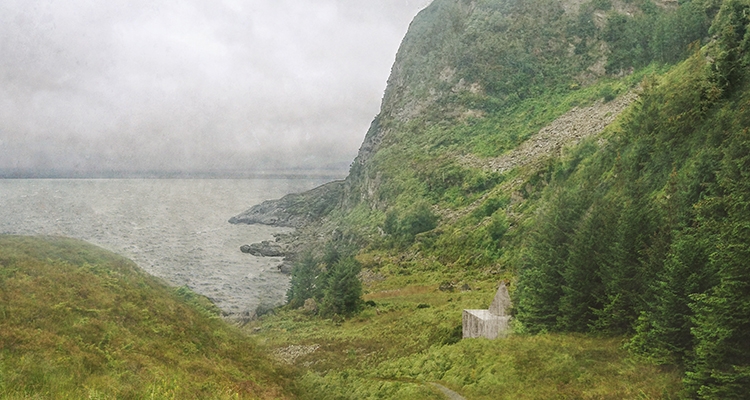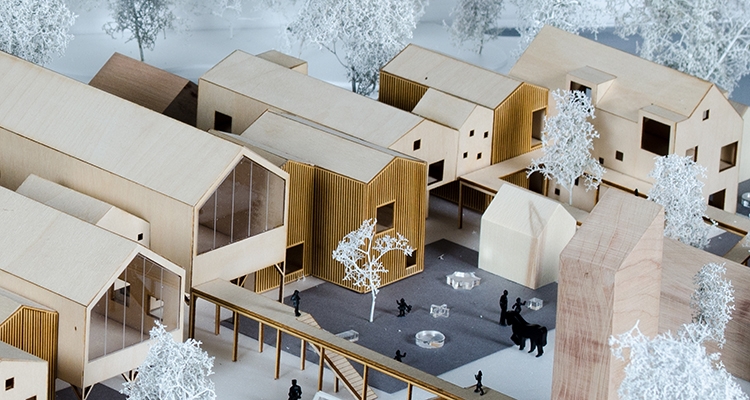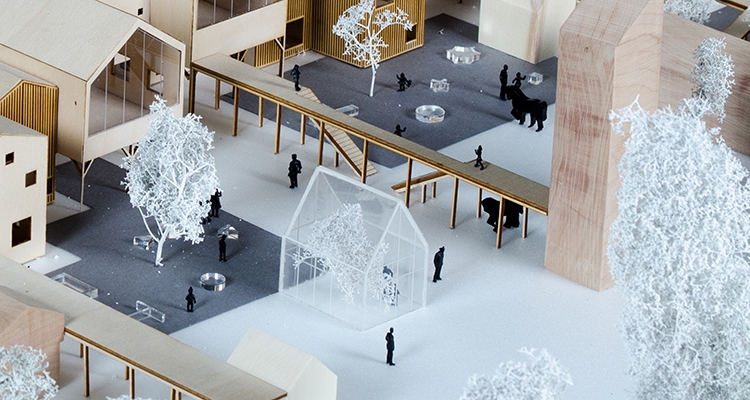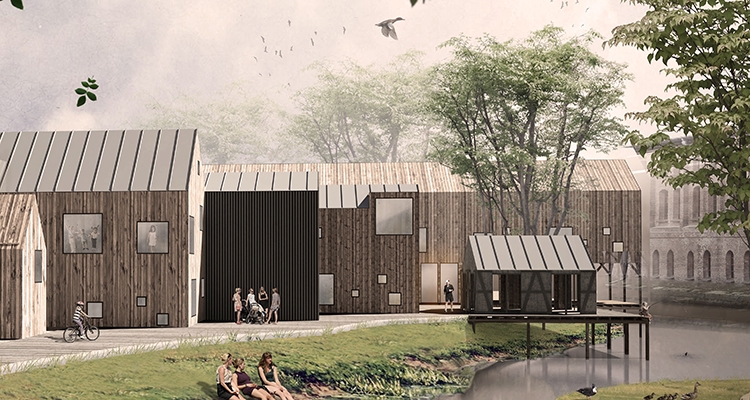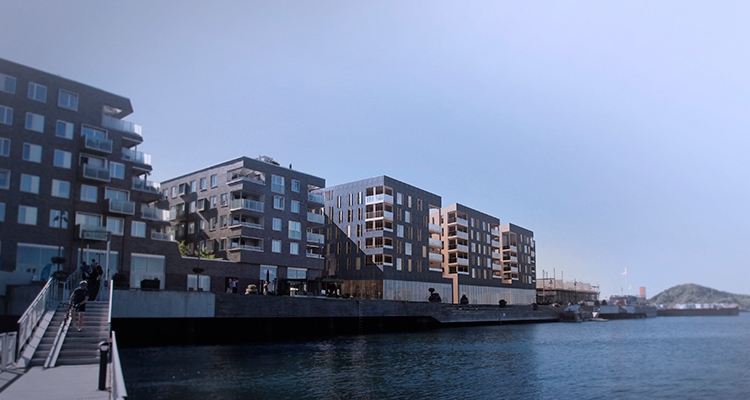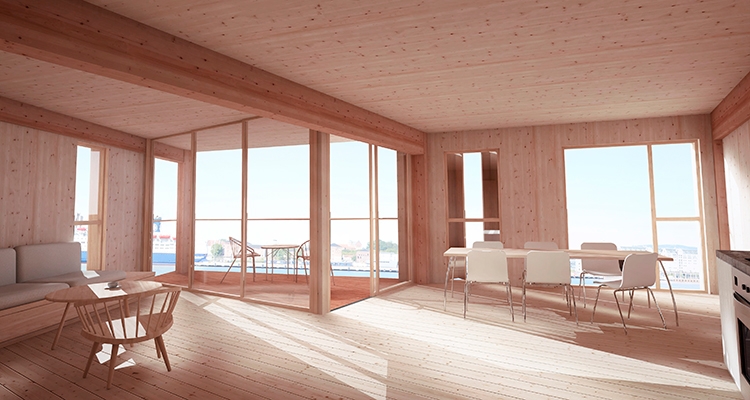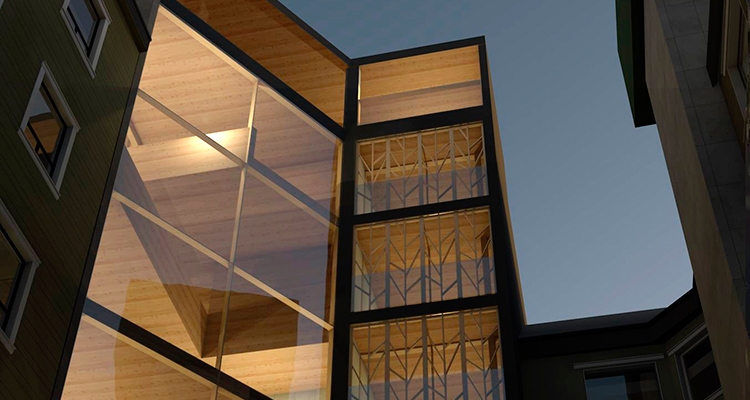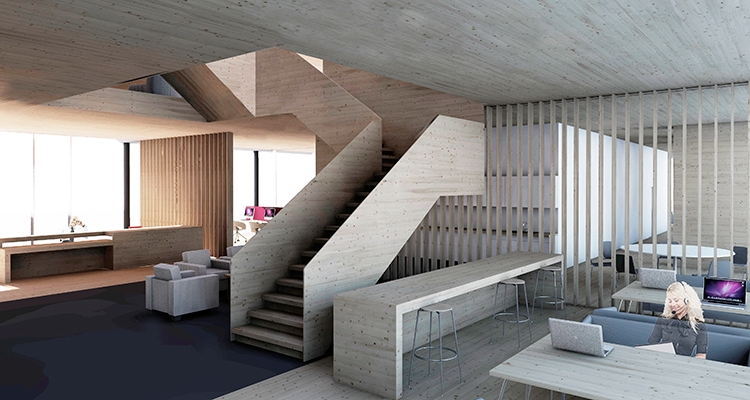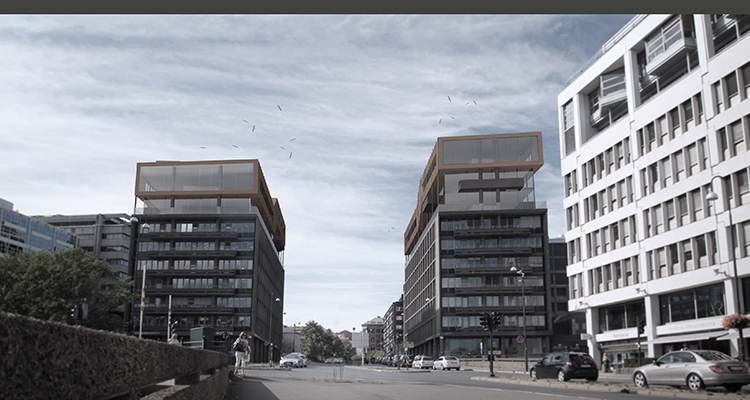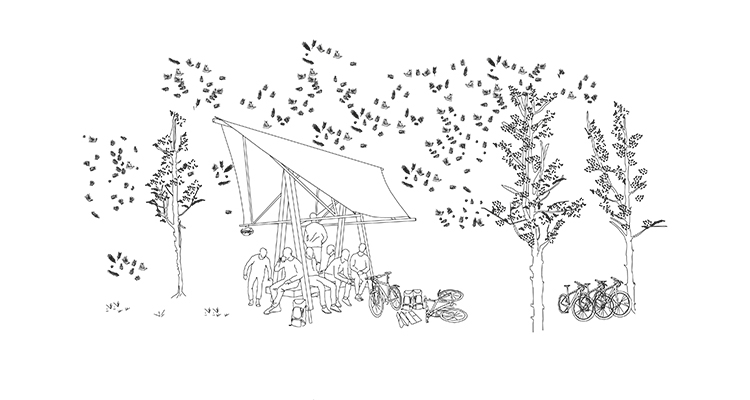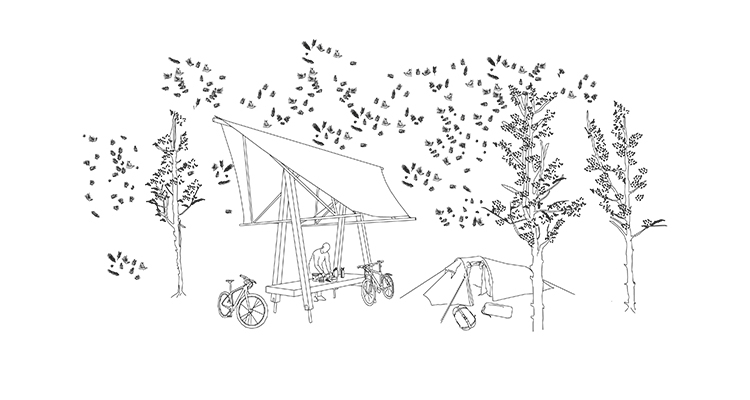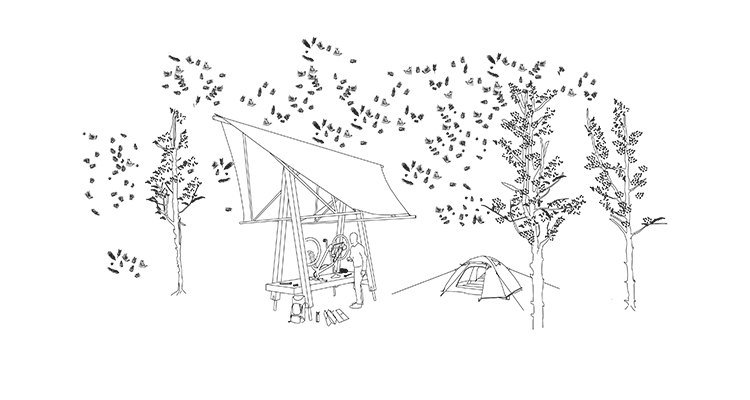Contrary to the surrounding extruded buildings the intention of my project is to articulate the building as a continued public landscape, generating a wide range of indoor and outdoor spaces. The border between the building and its surroundings are wiped out at selected locations, integrating it into the urban fabric. The building is designed to stimulate the further development of the city. The connection and closeness to the waterfront, and the new central public spaces, opens up for more development near the sea.
Diplomprosjekt
The exhibition space in the existing building is too narrow, and lacks room for experiencing the ships in their wholeness. Our strategy is to create spaces that complements Arnstein Arneberg’s architecture and simultaneously creates a more clear connection to the Viking traditions.
Every building has, if not a program, a purpose. In search of architecture on the place’ terms, I wanted to ensure that the place and its conditions also laid the premise for the purpose. Thus the program chosen was a farm.
A farm does not only relate to a place, it is, in the best cases, there because of it. As a sort of land keeper, dispensing its resources.
This, I think, is also how the best cases of architecture are brought out; as a spatial dispenser of its place. With awareness of changing it.
A farm does not only relate to a place, it is, in the best cases, there because of it. As a sort of land keeper, dispensing its resources.
This, I think, is also how the best cases of architecture are brought out; as a spatial dispenser of its place. With awareness of changing it.
Above Oslo is a contribution to the present discussion on high-rise buildings as a strategy for further densification in the central parts of Oslo. Placing the building close to an existing traffic node, gives several people the benefits of living an urban life. Timber is the main structural material. It has well-documented environmental properties as well as the advantage of being an important part of the Norwegian building culture.
Going to the theater has a strong ritual. You enter the building, often nicely dressed. You hang off your coat and collect your ticket. If you are with someone, you mingle and smalltalk in the foyer before it is time to enter the hall. There is often a walk towards it, and it often involves a staircase. It is clear where you are suppose to go. When entering the hall, you find your row and then your seat.
And then you wait.
And then you wait.
A single-family house from the XVIII century, from which only the outer walls remain today, once occupied the project’s plot. The fifteen-meter tall walls, which enclosed 4 floors and multiple rooms, are now freestanding elements. Today they create within one single space – a void in the dense urban fabric.
The project is to understand the structural and spatial potential of the walls, not in the way they performed in the past, but in relation to the one space they provide all together.
The project is to understand the structural and spatial potential of the walls, not in the way they performed in the past, but in relation to the one space they provide all together.
The sublime landscape of the site forms a monastery garden where the monastic life is lived. A path connects all the important spaces of the monastery and provides a walk of contemplation between the monks’ daily tasks – work, prayer, meals and recreation.
A monastery facilitates a range of diverse spaces with different functional and atmospheric requirements. This project investigates the architectural themes introduced by this program and the site at the island of Selja.
A monastery facilitates a range of diverse spaces with different functional and atmospheric requirements. This project investigates the architectural themes introduced by this program and the site at the island of Selja.
The combination of scale and variety of indoor and outdoor functions make kindergartens suitable as a measure to upgrade and revitalize an area’s city fabric and urban situation.
Our proposal of a kindergarten in combination with public offers takes on the task of upgrading the brownfield site of Grünerhagen, which today stands dislocated from the river, and create an unique backdrop along Akerselva’s continuous public riverfront.
Our proposal of a kindergarten in combination with public offers takes on the task of upgrading the brownfield site of Grünerhagen, which today stands dislocated from the river, and create an unique backdrop along Akerselva’s continuous public riverfront.
The infill reintroduces the use of wood in an old urban quarter in Kvadraturen. It explores a collective living situation combining compact apartments with large common spaces.
The superstructures are situated on top of two existing concrete buildings in Vika.
The two office buildings emphasize the difference in use of materials and introduces new principles of organizing a workplace.
The superstructures are situated on top of two existing concrete buildings in Vika.
The two office buildings emphasize the difference in use of materials and introduces new principles of organizing a workplace.
The project tailors an experience of travel that establishes a connection to the North Sea through a precise selection of sites and caters to the specific needs of touring cyclists through the development of modest, but precise facilities.
